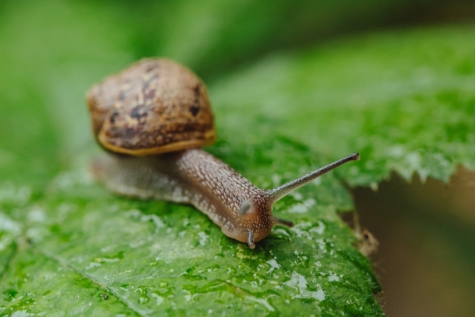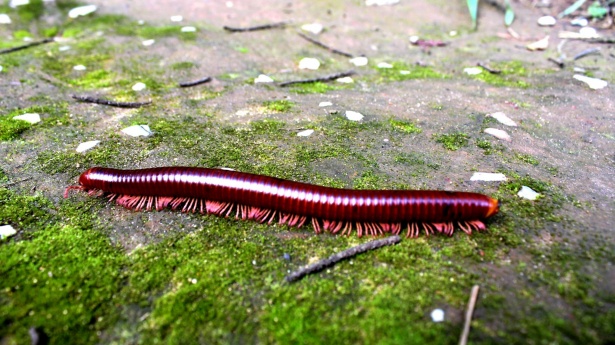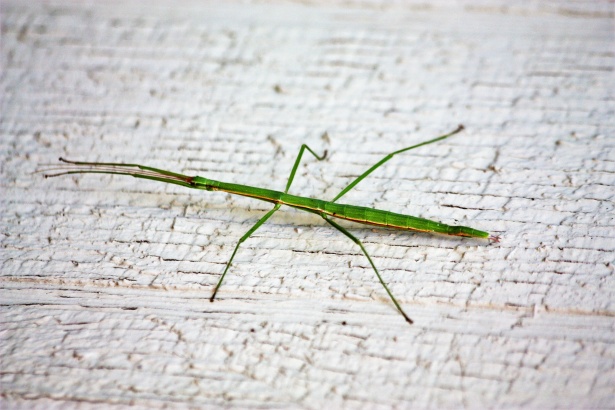If you’ve done any research into terrariums, you’ve probably heard of springtails. But did you know that there are many more insects that can be beneficial to your terrarium than just springtails?
While it’s satisfying to build a bioactive terrarium that has a complete ecosystem, you always have the option to add insects that just add an aesthetic value and will be enjoyable to care for.
In this post we’ll be going over 11 different insects that can add a little bit of life to your terrarium. We have a lot to cover, so strap yourself in for the ride.
Table of Contents
Springtails

Let’s get the obvious out of the way: springtails are the number one recommendation for insects to add to your terrarium. And for good reason.
Springtails, otherwise known as collembolans, are small whitish, gray insects measuring about 1/16 to 1/8 of an inch long.
In nature, they’re commonly found in moist soil and around decaying plant matter. They love to feed on fungi, pollen, algae, disease causing microorganisms, and decaying matter.
In case you’re interested in learning how to catch springtails out in the wild, you can check out my article on how to catch springtails here.
The combination of their affinity for moisture and their fungi feeding habits make them perfect for a terrarium environment. They do a great job at cleaning up your terrarium and preventing mold growth, while adding a little bit of livelihood to your terrarium.
Depending on where you live and what your climate is like, you may want to decide between getting tropical springtails or temperate springtails.
Temperate springtails are best for anyone living between 65 and 85 F and tropical springtails for anyone living somewhere warmer than that. If you’re on the border of that range, temperate springtails will probably be fine.
As for feeding them, generally they will do fine feeding themselves off the natural mold growth within your terrarium.
However, if you want to grow your population from a starter culture, you can grow your springtail population amongst chunks of activated carbon or charcoal. All you have to do is add a little bit of water and maybe throw in a few grains of rice and they should be good to grow.
If you want to learn more about cultivating springtails, I have another post all about springtails that you can check out here.
Isopods

The runner-up to springtails in terms of bioactive insects are isopods (also known as rolly pollies, pill bugs, or potato bugs).
You might recognize these guys as those bugs that are usually found under damp rocks after a season of rain. After all, these guys love very high humidity and moisture.
Isopods are a species of invertebrates that are probably more closely related to lobsters and crabs than they are to insects.
There are two types of isopods: dwarf isopods and standard isopods. Dwarf Isopods reach about a quarter inch in length or about the size of a grain of rice at adulthood. Standard isopods reach a half inch to 3/4 of an inch at adulthood. That’s about the size you would see isopods in your backyard living under a rock.
Like springtails, isopods are great at cleaning up your terrarium. They help break up plant debris and leaf litter while simultaneously creating nutrients for your plants.
That makes feeding them and caring for them relatively easy since plant litter is generally plentiful in most terrariums. you can also feed them a more diverse diet by giving them some zucchini, pumpkin, or any other fresh fruits or vegetables. They also enjoy a source of calcium from cuttlebone.
They can also be used as a source of nutrition for any other habitants you happen to be raising in your terrarium like geckos, frogs, and tarantulas.
The thing that I like about isopods that’s lacking in springtails is that there’s a lot of variety of colors depending on the species you choose. They do a great job of adding some color to your terrarium that might be difficult to achieve with plants alone.
Here’s a list of some cool isopods species that I found from a quick search:
- Dwarf Isopods
- Dairy cow isopods
- Zebra isopods
- Dalmatian isopods
- Rubber ducky isopods
- Japanese “magic potion” isopods
- Red tiger isopods
- Panda king isopods
- Papaya isopods
- Armadillidium gestroi
- Armadillidium nasatum
- Oniscus asellus
- Porcellio expansus
Worms

Worms are another beneficial insect that help aerate the soil and break down decaying matter.
You won’t see worms listed at the top of most terrarium builders list for a few of reasons:
- Most species will probably be too big for a standard terrarium.
- They have a habit of disrupting the substrate and making a bit of a mess on the container walls.
- You probably won’t see them too often as they prefer to hide in the substrate.
If you want to go the route of adding worms to your terrarium, you can buy some online for a relatively low price and feed them with scraps off of your table. They aren’t very picky eaters and are overall very low maintenance.
Snails

Snails take the spot for the most underrated set of insects that are great to add to a terrarium.
They live about 10 to 15 years in captivity, are relatively low maintenance, and can have some cool designs on their shells. And who doesn’t love to watch snails crawl around?
Snails love to feed on vegetables and fruits (except for citrus), just like isopods. They will also enjoy feeding on a little bit of cuttlebone to add some calcium to their diet. The calcium will go towards building and maintaining their little mobile homes (their shells).
Snails are typically nocturnal and will often hide during the daytime. If possible, providing them some hiding space with some decorations or even a piece of wood will give them a comfortable spot to congregate.
The one caution you will want to be wary of if you are keeping snails in your terrarium is to avoid direct sunlight. Too much sunlight can increase the temperature in the terrarium like a greenhouse effect and dehydrate your snails, resulting in death.
Millipedes

Millipedes are really cool insects, best known for their hundreds of legs moving together in sync. There are over 12,000 species of millipedes in the world coming in various sizes ranging from one or two inches to 14 in in length depending on the species.
Millipedes love high humidity environments, so they are well suited for the terrarium. However if you plan to have millipedes in your terrarium, you will want to have a thicker substrate of about four to six inches in depth to allow them to dig, hide, eat, and live in.
They eat decaying wood, leaves, and other undesirables found in the substrate. Occasionally, you may want to provide some fruit or vegetables to diversify their diet.
When it comes to space for your millipede, more space is better. At minimum you will want the container to be at least as wide as your millipede at adulthood, but you might want to aim for twice as long to give it some more space.
Here’s a list of millipedes species that are well suited for beginners:
- Smokey oak millipede
- Scarlet millipede
- Bumblebee millipede
- Archispirostreptus gigas
- Ivory millipedes
- Orthoporus ornatus
There are a couple of things you have to watch out for when handling millipedes:
- Depending on the species, they may be sensitive to temperatures
- Millipedes are toxic, and can give you a mild rash on the skin. So make sure to wash your hands after handling them
Spiders

Although spiders probably top the list on many people’s list of phobias, they actually make great pets. Tarantulas and jumping spiders especially are very popular pets that can be added to a terrarium.
It might be a little nerve-wracking having to care for a large creature in your terrarium for the first time, but spiders are actually pretty hardy. So don’t worry too much about trying to get the conditions perfect.
Spiders love the structural variety that plants in a terrarium provide. There’s plenty of cover for them and plenty of places for them to climb and make their webs. They also tend to do well in relatively high humidity, although this may very depending on the species.
Like millipedes, it’s also generally a good idea to provide a little bit of extra depth in the substrate. This will allow them the opportunity to burrow if they like. It also lets the top of the soil to remain dry while still maintaining higher humidity levels due to moisture near the bottom of the substrate.
Depending on the size of your spider, you may want to include a small dish of water for them to drink. This could be anything from a bottle cap to a tiny bowl. This also serves a dual purpose of raising the humidity inside the terrarium for your spider.
The other thing you’ll need to provide for your spider is good ventilation and some degree of airflow. This is to prevent the air from becoming stale.
At the same time, this can also cause a terrarium to dry up a bit. So it’s a little bit of a balancing act to get the two just right.
Jungle Scorpions

Scorpions also might not be at the top of everyone’s list for pets, but they can be great choices for anyone interested in unconventional pets. They are relatively low maintenance and are docile, despite what some people may believe.
The most popular jungle scorpion That’s relatively easy to care for is the emperor scorpion. Other species include:
- Malaysian black scorpion
- javanese jungle scorpion
- asian forest scorpion
- Dictator scorpion
Like the other insects here, jungle scorpions love high humidity and the plenty of hiding spaces created by terrarium plants. Make sure to provide them with a dish of water for it to drink and raise the humidity levels.
One of the challenges with raising scorpions is that they prefer high temperatures ranging from 70 to 90 F. These temperatures might not be suitable for many of your typical terrarium plants like moss.
There are a few other nuances that make scorpion raising different than some of the other insects listed here:
- Scorpions are not the type of pets to be handled (although they won’t pinch or sting unless threatened).
- A heat mat may be required to raise the temperatures for your scorpion.
- It will take a little bit of maintenance to feed them a few crickets a week.
Praying Mantis

The praying mantis is another unique insect that many terrarium lovers enjoy raising in their terrariums. Like spiders, praying mantises love climbing around and hanging on plant branches.
If you decide to have a praying mantis in your terrarium, you’ll want to make sure that the container is about three times longer than the body length and twice as wide. This will give it enough space to shed its skin. You’re also going to have to provide it with some ventilation.
Depending on the species, you may need more or less humidity. If your container is going to have a lot of ventilation, You’re going to have to mist your terrarium more often to maintain the humidity levels.
As for what they eat, mantises eat live insects for food. You will have to feed it flies, crickets, or caterpillars. When feeding your mantis, it’s important to not feed them everyday. Most species will be fine with feeding every 1 to 4 days, but be sure to double check which species you have and what it’s feeding habits are.
Stick and Leaf insects

Stick bugs and leaf bugs (belonging to the phasmatodea order) are also really cool bugs to have in your terrarium. Like the names imply, these bugs look a lot like sticks or leaves.
Unlike the other insects listed here, caring for stick and leaf insects is a little bit more of a challenge and will require delicate care that is often species dependent. If you are up for a challenge, stick and leaf bugs can be an enjoyable experience learning the ins and outs of their unique needs.
Like mantises, you will also want to have a pretty large container to house them. Roughly two to three times the length and width will be sufficient, but bigger is always better.
While you can handle them if needed, it is best to avoid doing so when not necessary. It is very easy for them to shed a leg if handled roughly.
As for their feeding habits, most species of leaf insects will eat blackberry leaves and oak leaves. Stick insects also eat fresh leaves, however the exact leaves they will choose to eat will vary depending on the species. Always be sure to do your research to find out what your particular species prefers.
The preferred humidity levels will also be dependent on the species. Because of this, regular cleaning will be necessary to avoid fungus and mold growth. This may require you to clean out the substrate every once in a while.
Grasshoppers

If you have reptiles, amphibians, or other insect eating pets, raising grasshoppers can be an option within your terrarium to get a constant source of feeding material. Or if you just like grasshoppers, that’s fine too.
One of the main concerns you will have to address with raising grasshoppers is keeping the humidity levels low. If you’re going for a desert terrarium build, grasshoppers might be a possibility for you.
Grasshoppers tend to prefer temperatures on the hotter end of the spectrum, ranging from 82 to 90 F. To reach those temperatures, you’ll have to supply a heating pad or a heating lamp. This can be an issue if you have plants in your terrarium that are sensitive to heat, such as moss.
Grasshoppers will eat grass, weeds, and even certain leaves. Most pet stores that sell crickets or locusts will have food for your grasshoppers. You may also want to provide them with a small bowl of water for them to drink, although depending on what you feed them, they may get enough hydration from their food.
These guys will also want a little bit of ventilation in the container and low humidity. Just make sure they can’t hop out of your container through the holes.
Beetles

Beatles are another really cool insect to add to your terrarium. There are over 400,000 different species of beetles, with each having its own preference for living conditions.
Depending on your species, your beetle will have preference for temperature, moisture levels, and food. So it’s going to take a little bit of work to research what species of beetle will survive in your terrarium and what it needs to survive.
To further increase the complexity, the conditions for larvae often will be different from the required living conditions as an adult beetle. Larvae will generally need specific conditions in the soil for them to feed, while beetles will spend more time out and about in the container.
If you like doing some research and are looking for a very unique experience, caring for a beetle might be right for you.
Cockroaches

A lot of people view cockroaches as pests, but they can also serve as good pets. They are very low maintenance and very hardy insects. There are over 3,500 species of cockroach around the world and only 30 of them are considered pests.
Cockroaches love humidity and low-light conditions, which are typical of a terrarium. But depending on the species, they may require tropical temperatures (over 85 F) which could be more than your terrarium plants are able to handle.
Some of the most popular cockroach species to keep as a pet are the hissing cockroach, death’s head cockroach, and Indian domino cockroach. The hissing cockroach especially is docile and easy to handle.
Cockroaches can eat pretty much anything. Fruits and vegetables and rotting wood or leaves will be sufficient. But always check your specific species first to verify.
If you do plan on getting cockroaches (intentionally), entomologists recommend getting them in groups because cockroaches are social insects.
That pretty much covers the list of 11 insects that you can add to your terrarium. But this is by no means a comprehensive list. You can always modify your terrarium to accommodate an insect you would like to raise. Feel free to get creative about how you can accommodate your insects.

